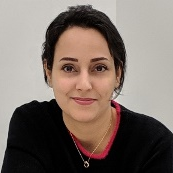New Advances and Applications in Image Processing and Computer Vision
A special issue of Mathematics (ISSN 2227-7390). This special issue belongs to the section "Mathematics and Computer Science".
Deadline for manuscript submissions: 31 October 2024 | Viewed by 10806
Special Issue Editor
Special Issue Information
Dear Colleagues,
Computer vision adoption is growing steadily. Be it video-detection systems in self-driving cars, 3D printing in manufacturing, healthcare or advanced sensors in defense and logistics, technology is playing its part. Additionally, there is a growing call for integrating theoretical research on image processing algorithms with the more applied research on image processing systems.
This Special Issue is on topics of image processing and computer vision, along with their applications in different domains and systems in different environments. Recent advancements in image processing and computer vision have enabled researchers to boost the development of intelligent applications in different domains. These intelligent applications are integrated as real-world applications in the environment in order to collecting data seamlessly continuously and performing Image Processing on the huge amount of data collected from these environments. These intelligent applications are developed to be adaptable in different unexpected conditions, which makes these applications highly useful in real-world environments. There are numerous challenging real-world applications where vision is being successfully used, both in specialized applications such as image search and autonomous navigation, as well as for fun, consumer-level tasks that can be applied on personal photos and videos.
This Special Issue aims to explore the variety of techniques used to analyze and interpret images, together with computer vision applications and advances, by providing a platform for researchers from both academia and industry to present their novel and unpublished work in the domains of computer vision and image processing. This will help to foster future research in the growing field of computer vision and its related areas.
Dr. Samaneh Mazaheri
Guest Editor
Manuscript Submission Information
Manuscripts should be submitted online at www.mdpi.com by registering and logging in to this website. Once you are registered, click here to go to the submission form. Manuscripts can be submitted until the deadline. All submissions that pass pre-check are peer-reviewed. Accepted papers will be published continuously in the journal (as soon as accepted) and will be listed together on the special issue website. Research articles, review articles as well as short communications are invited. For planned papers, a title and short abstract (about 100 words) can be sent to the Editorial Office for announcement on this website.
Submitted manuscripts should not have been published previously, nor be under consideration for publication elsewhere (except conference proceedings papers). All manuscripts are thoroughly refereed through a single-blind peer-review process. A guide for authors and other relevant information for submission of manuscripts is available on the Instructions for Authors page. Mathematics is an international peer-reviewed open access semimonthly journal published by MDPI.
Please visit the Instructions for Authors page before submitting a manuscript. The Article Processing Charge (APC) for publication in this open access journal is 2600 CHF (Swiss Francs). Submitted papers should be well formatted and use good English. Authors may use MDPI's English editing service prior to publication or during author revisions.
Keywords
- 3D computer vision
- adversarial attacks and robustness
- bias, fairness and privacy
- biometrics, face, gesture and pose
- computational photography, image and video synthesis
- image and video retrieval
- learning and optimization for computer vision
- low level and physics-based vision
- medical and biological imaging
- motion and tracking
- object detection and categorization
- representation learning for vision
- scene analysis and understanding
- segmentation
- video understanding and activity analysis
- vision for robotics and autonomous driving
- visual reasoning and symbolic representations
- applications
- image sensing, modelling and representation
- statistical modeling and estimation
- image models (structure based, morphological, graph based)
- image processing methods (linear and non-linear filtering, transforms, wavelets, etc.)
- inverse imaging, compressive sensing
- image acquisition, denoising, deblurring, reconstruction
- machine learning and image processing algorithms
- image segmentation and representation
- image and video retrieval
- image processing and understanding
- knowledge representation and high-level vision
- graph theoretic methods
- animation, movies, advertising, video games
- real-time image processing and learning
- neural network applications
- deep learning
- human-centric self-supervised learning
- machine vision
- computer-generated imagery
- biomedical image processing
- biomedical and health informatics





